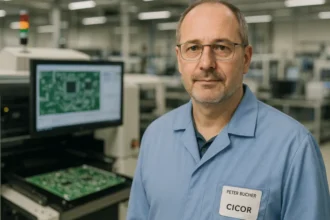Introduction to Ralph Stanley voice model AI
Imagine the haunting melodies of bluegrass echoing through the air, infused with a voice that transcends time. Ralph Stanley, the legendary figure in American folk music, has left an indelible mark on countless hearts. But what if we could experience his unique sound once more? Enter the world of AI technology and its groundbreaking innovation—the Ralph Stanley voice model AI. This cutting-edge creation aims to capture the essence of Stanley’s iconic vocals, allowing new generations to appreciate his artistry while preserving his legacy. As we dive into this fascinating realm where technology meets tradition, prepare for an exploration that reveals not just how it works but also why it matters in today’s evolving music landscape.
The rise of AI technology in the music industry
The music industry is undergoing a transformation like never before. Artificial Intelligence has emerged as a game-changer, reshaping how artists create and distribute their work.
From composing songs to generating unique soundscapes, AI tools are becoming essential for musicians. They help streamline the creative process and offer new avenues for exploration in composition.
Streaming platforms leverage AI algorithms to curate personalized playlists, enhancing user experience while boosting artist visibility. This technology analyzes listening habits and preferences to recommend tracks that resonate with individual audiences.
Moreover, vocal synthesis technologies allow fans to interact with their favorite artists in innovative ways. Imagine hearing unreleased collaborations or experiencing performances from lost legends through lifelike voice recreations.
As this digital revolution continues, it raises intriguing questions about creativity and authenticity within the realm of music production. The rise of AI technology marks an exciting chapter that challenges traditional norms while opening doors for unprecedented possibilities.
What is a voice model AI and how does it work?
Voice model AI refers to a technology that uses artificial intelligence to replicate human vocal patterns. It analyzes countless audio samples from an artist, capturing the nuances of their voice.
This process begins with data collection. Engineers gather recordings, including various pitches and emotional deliveries. The AI then processes these samples through complex algorithms.
These algorithms learn the unique characteristics of the singer’s tone, rhythm, and pronunciation. Over time, the system can produce new vocals that sound remarkably like the original artist.
The result is an astonishingly realistic simulation capable of singing new melodies or even generating lyrics in that distinctive voice. Essentially, it’s like having a digital twin for musicians—an innovation changing how we think about music production and fandom.
The development of the Ralph Stanley voice model AI
The development of the Ralph Stanley voice model AI is a fascinating journey. It combines advanced machine learning techniques with rich musical heritage. The project began by gathering an extensive database of recordings from Ralph Stanley’s illustrious career.
Engineers meticulously analyzed his vocal patterns, emphasizing nuances in tone and emotion. This deep dive into his style allowed for a more authentic representation of his sound.
Once the data was collected, algorithms were trained to mimic not just pitch but also phrasing and rhythm. Each note was carefully crafted to reflect Stanley’s unique delivery.
Collaboration with musicians who understood bluegrass further enriched the model’s authenticity. They provided insights that helped fine-tune the AI’s output, ensuring it resonates deeply with fans old and new.
This innovative blend of technology and tradition aims to keep Ralph’s spirit alive through music long after he has left this world.
Benefits of using the Ralph Stanley voice model AI
The Ralph Stanley voice model AI offers a unique opportunity for musicians and fans alike. It captures the essence of his legendary sound, allowing new generations to appreciate bluegrass music.
Artists can use this technology to experiment with different styles while maintaining authenticity. This blend opens doors for creativity that was previously unimaginable.
Additionally, producers have access to an extensive library of vocal samples. They can create tracks that resonate emotionally without needing a live recording session.
For tribute artists, the AI serves as a powerful tool to honor Stanley’s legacy. They can recreate his iconic performances with remarkable accuracy.
Listeners benefit too, experiencing fresh renditions of classic songs they love. The combination of tradition and innovation enriches their musical journey in exciting ways.
Potential impact on the music industry and tribute to Ralph Stanley’s legacy
The advent of the Ralph Stanley voice model AI marks a significant moment in music history. It has the potential to reshape how artists create and pay homage to their influences.
Imagine new generations of musicians harnessing this technology to explore bluegrass sounds infused with Stanley’s unique style. This creates opportunities for collaboration that were once unimaginable.
Furthermore, it serves as a powerful tribute to Ralph Stanley’s enduring legacy. His influence on country and bluegrass is undeniable, and now his voice can inspire future projects long after his passing.
While some may question authenticity, others see this as an opportunity for preservation. The AI doesn’t just replicate; it revitalizes interest in traditional music forms.
As we navigate these changes, one thing remains clear: Ralph Stanley’s impact will continue resonating through innovative avenues like the voice model AI.
Conclusion: Is the Ralph Stanley voice model AI the future of music?
The Ralph Stanley voice model AI represents a fascinating intersection of technology and artistry. It captures the essence of a legendary bluegrass performer, allowing new generations to experience his music in unprecedented ways.
This innovation paves the way for other artists to create immersive experiences that honor their influences while pushing creative boundaries. The potential applications are vast, from live performances to personalized listening experiences tailored for fans.
However, as with any technological advancement, it raises questions about authenticity and artistic integrity. How does one balance homage with originality?
As music continues to evolve alongside technology, tools like this voice model challenge our perceptions. They invite us to rethink what it means to be an artist in a digital age that can replicate voices once thought irreplaceable.
FAQs
The advent of the Ralph Stanley voice model AI marks a significant moment in music technology. As this innovative tool gains traction, it raises intriguing questions about artistry and authenticity. Here are some frequently asked questions to further explore this captivating development.
Q: What is the Ralph Stanley voice model AI?
A: The Ralph Stanley voice model AI emulates the singing style and tone of the legendary bluegrass musician, Ralph Stanley. It uses advanced algorithms to capture his unique vocal qualities, allowing musicians to create songs that resonate with his iconic sound.
Q: How does voice model AI work?
A: Voice model AIs analyze vast amounts of audio data from their subject—in this case, recordings of Ralph Stanley’s performances. By employing machine learning techniques, they learn patterns in pitch, intonation, and emotion. The result is an artificial intelligence capable of producing original vocal tracks that mimic its human counterpart.
Q: Can anyone use the Ralph Stanley voice model AI?
A: Yes! Musicians and producers can access this technology for songwriting or recording purposes. This democratization allows aspiring artists to incorporate authentic bluegrass sounds into their work without needing extensive training or experience in traditional techniques.
Q: Will using a voice model affect live performances?
A: While studio recordings may benefit from using such models, live performances will always rely on genuine human expression. The art lies within spontaneous moments and emotional connections between performers and audiences—elements an AI cannot replicate.
Q: Can the use of AI impact how we perceive musical talent?
A: As these technologies develop, they challenge our understanding of what constitutes talent in music creation. While some may argue it’s diluting artistic integrity, others see it as a tool for innovation—a way for new talents to emerge alongside established legends like Ralph Stanley.
With advancements like the Ralph Stanley voice model AI at our fingertips, we stand at a crossroads where tradition meets modernity in music creation. Only time will tell if these innovations become integral components of our musical landscape or remain a fascinating experiment rooted firmly in tribute.

















